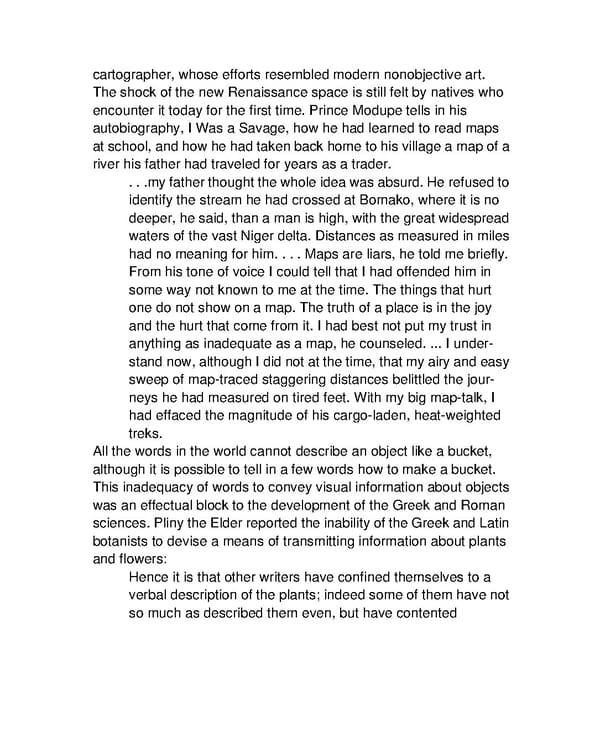cartographer, whose efforts resembled modern nonobjective art. The shock of the new Renaissance space is still felt by natives who encounter it today for the first time. Prince Modupe tells in his autobiography, I Was a Savage, how he had learned to read maps at school, and how he had taken back home to his village a map of a river his father had traveled for years as a trader. . . .my father thought the whole idea was absurd. He refused to identify the stream he had crossed at Bomako, where it is no deeper, he said, than a man is high, with the great widespread waters of the vast Niger delta. Distances as measured in miles had no meaning for him. . . . Maps are liars, he told me briefly. From his tone of voice I could tell that I had offended him in some way not known to me at the time. The things that hurt one do not show on a map. The truth of a place is in the joy and the hurt that come from it. I had best not put my trust in anything as inadequate as a map, he counseled. ... I under- stand now, although I did not at the time, that my airy and easy sweep of map-traced staggering distances belittled the jour- neys he had measured on tired feet. With my big map-talk, I had effaced the magnitude of his cargo-laden, heat-weighted treks. All the words in the world cannot describe an object like a bucket, although it is possible to tell in a few words how to make a bucket. This inadequacy of words to convey visual information about objects was an effectual block to the development of the Greek and Roman sciences. Pliny the Elder reported the inability of the Greek and Latin botanists to devise a means of transmitting information about plants and flowers: Hence it is that other writers have confined themselves to a verbal description of the plants; indeed some of them have not so much as described them even, but have contented
 Understanding Media by Marshall McLuhan Page 175 Page 177
Understanding Media by Marshall McLuhan Page 175 Page 177